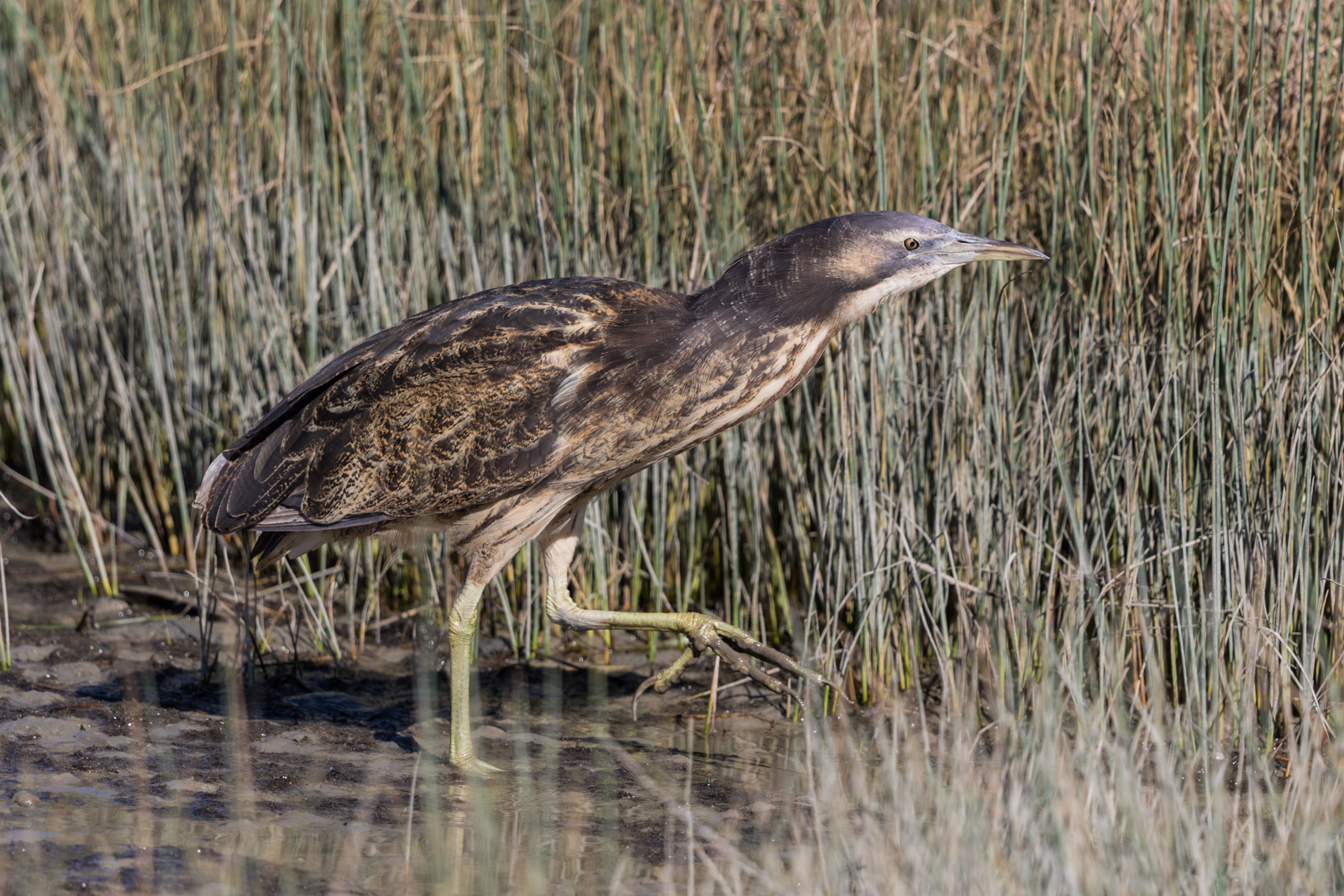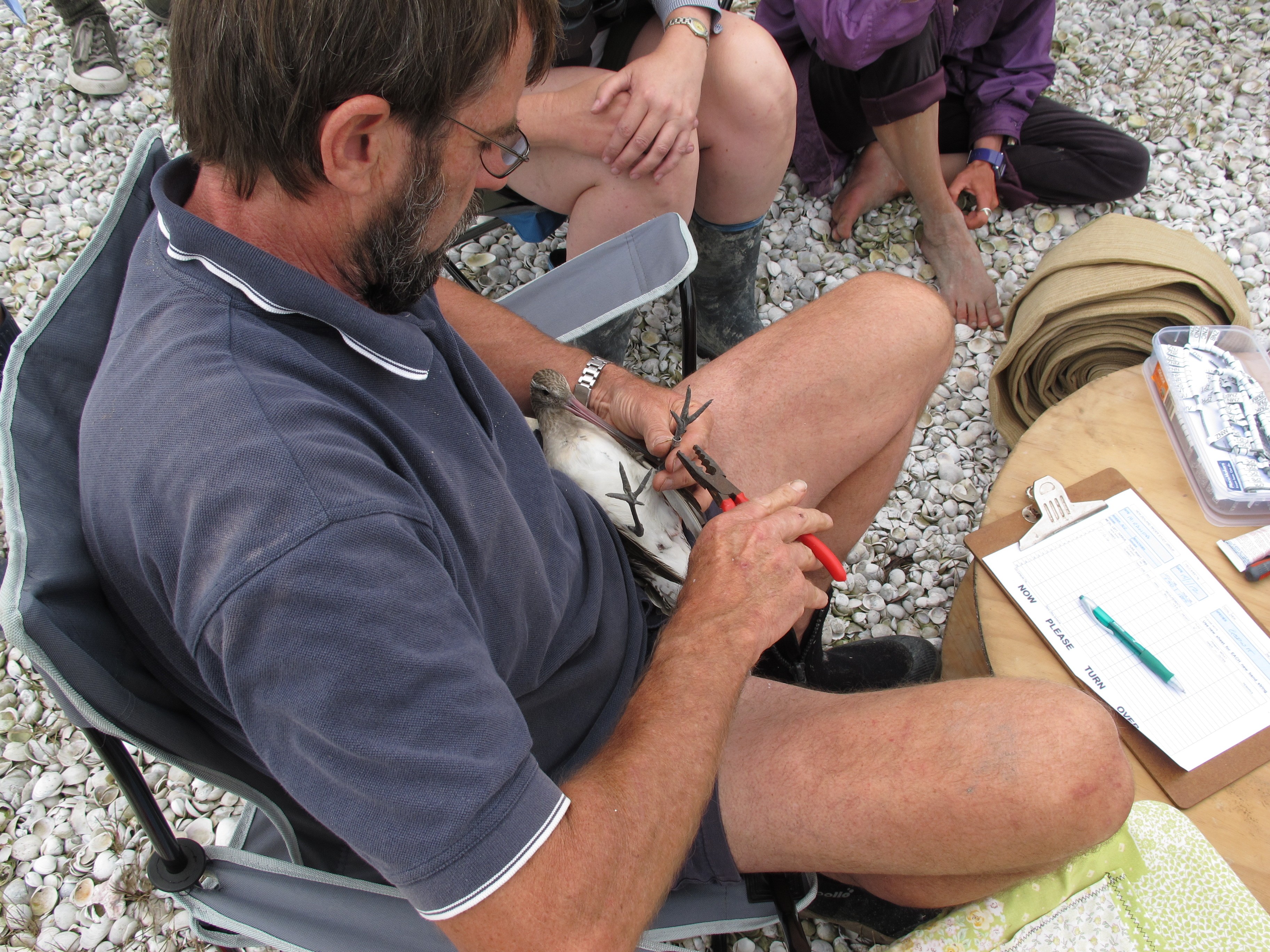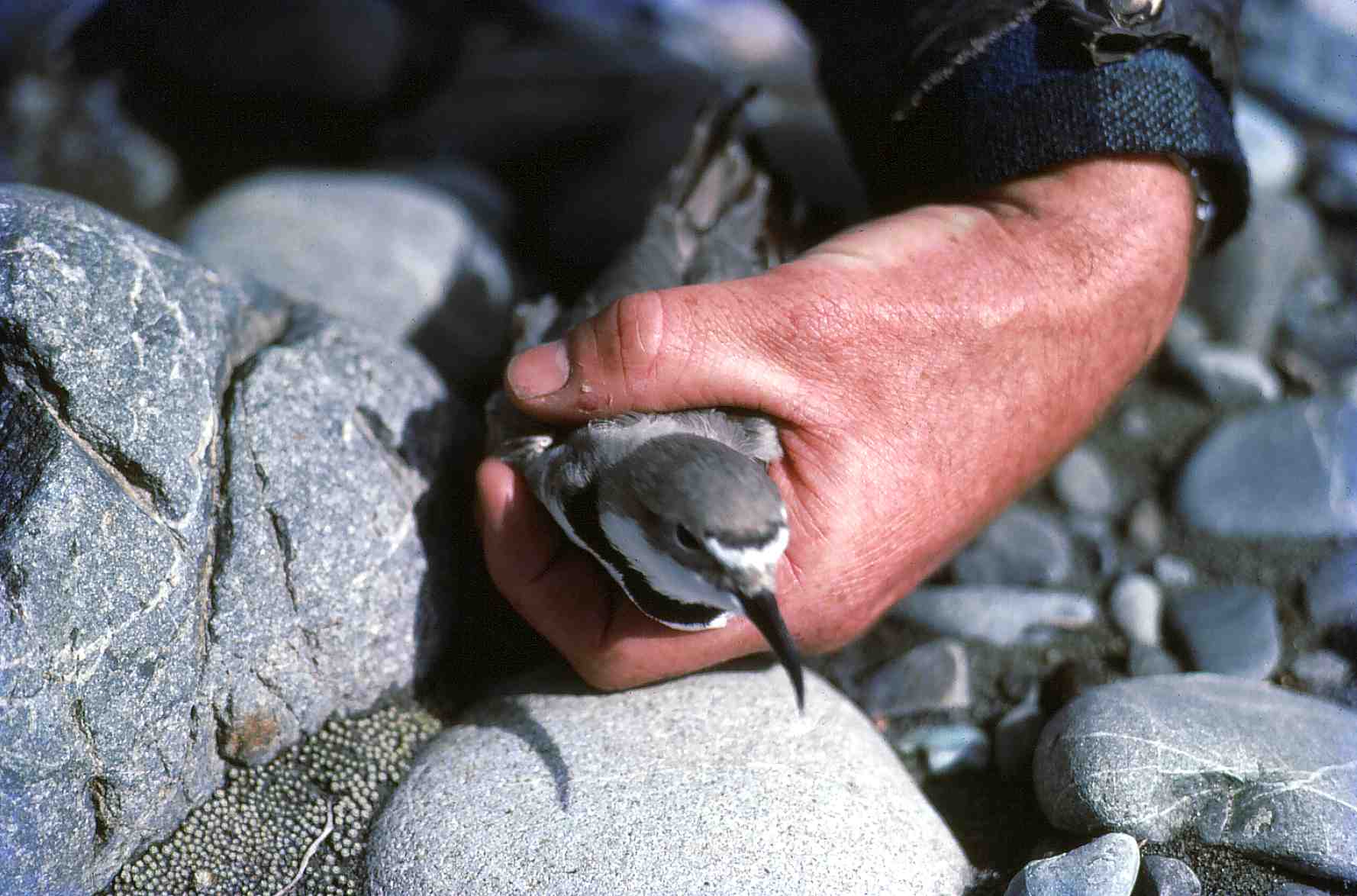|
Te Waihora
Lake Ellesmere / Te Waihora is a shallow coastal lake or waituna, in the Canterbury region of the South Island of New Zealand. It is directly to the west of Banks Peninsula, separated from the Pacific Ocean by the long, narrow, sandy Kaitorete Spit. It lies partially in extreme southeastern Selwyn District and partially in the city of Christchurch's district. The lake holds high historical and cultural significance to the indigenous Māori population and the traditional Māori name ''Te Waihora'' means ''spreading waters''. It has officially had a dual English/Māori name since at least 1938. Geography and hydrology Lake Ellesmere / Te Waihora is a brackish bar-type water body, commonly called a lake or lagoon. It covers an area of , and is New Zealand's fifth largest lake. Nature Southern elephant seals have been observed here, spending short periods in the lake. Basking sharks have occasionally entered the lake. Lake Ellesmere is also home to a wide variety of birds, ... [...More Info...] [...Related Items...] OR: [Wikipedia] [Google] [Baidu] |
Selwyn District
Selwyn District is a predominantly rural district in central Canterbury, on the east coast of New Zealand's South Island. It is named after the Selwyn River / Waikirikiri, which is in turn named after Bishop George Selwyn, the first Anglican bishop of New Zealand who, in 1843 and 1844, travelled the length of the country by horse, foot, boat and canoe, leaving in his wake a sprinkling of locations that now bear his name. As of the 2023 census, Selwyn District is the fastest-growing territorial authority in New Zealand, with a population increase of 29% over the prior five years. History The first inhabitants of the area were the Māori who first settled New Zealand from the Cook and Society Islands about 700 years ago. The predominant Māori tribe today, in Selwyn and most of the rest of the South Island, is Ngāi Tahu, whose local marae (meeting house) is at Taumutu near the exit of Lake Ellesmere (Te Waihora). In the late 19th century, European (chiefly British) colonist ... [...More Info...] [...Related Items...] OR: [Wikipedia] [Google] [Baidu] |
Australasian Bittern
The Australasian bittern (''Botaurus poiciloptilus''), or Matuku-hūrepo in Māori language, Māori, is a stocky, sizeable and elusive heron-like bird native to the Wetland, wetlands of Australia, New Zealand, and New Caledonia.Heather, B. D., & Robertson, H. A. (1996). ''The Field Guide to the Birds of New Zealand''. Penguin Books (NZ) Ltd. It belongs to the bittern subfamily of the heron family Heron, Ardeidae. The Australasian bittern is best known for its cryptic plumage and behaviours, which allows it to blend into the rushes and reeds of its wetland habitats, making it particularly difficult to spot.O’Donnell, C. F. J., Williams, E. M., & Cheyne, J. (2013)Close approaches and acoustic triangulation: techniques for mapping the distribution of booming Australasian bittern (''Botaurus poiciloptilus'') on small wetlands.''Notornis'', ''60'', 279–284. Despite being rarely seen, Australasian bittern males have a distinct "booming" call that can carry long distances. Physicall ... [...More Info...] [...Related Items...] OR: [Wikipedia] [Google] [Baidu] |
Paradise Shelduck
The paradise shelduck (''Tadorna variegata''), also known as the paradise duck, or in Māori, is a species of shelduck, a group of goose-like ducks, which is endemic to New Zealand. Johann Friedrich Gmelin placed it in the genus '' Anas'' with the ducks, geese, and swans. Both the male and female have striking plumages: the male has a black head and barred black body and the female has a white head with a chestnut body. They weigh between and are between in length. Paradise shelducks mate for life and usually live as pairs, and moult their feathers from December to February. They are primarily herbivorous, and mostly graze on pasture grasses and clover, but have been observed eating a wide range of invertebrates. They are seasonally hunted as a game bird throughout New Zealand, and today the IUCN Red List classifies them as a species of least concern. Taxonomy The paradise shelduck was formally described in 1789 by the German naturalist Johann Friedrich Gmelin in hi ... [...More Info...] [...Related Items...] OR: [Wikipedia] [Google] [Baidu] |
Anatidae
The Anatidae are the biological family (biology), family of water birds that includes ducks, goose, geese, and swans. The family has a cosmopolitan distribution, occurring on all the world's continents except Antarctica. These birds are adapted for aquatic locomotion, swimming, floating on the water surface, and, in some cases, diving in at least shallow water. The family contains around 174 species in 43 genus, genera (the magpie goose is no longer considered to be part of the Anatidae and is now placed in its own family, Anseranatidae). They are generally herbivorous and are monogamy in animals, monogamous breeders. A number of species undertake bird migration, annual migrations. A few species have been domesticated for agriculture, and many others are hunted for food and recreation. Five species have become extinct since 1600, and many more are threatened with extinction. Description and ecology The ducks, geese, and swans are small- to large-sized birds with a broad and elo ... [...More Info...] [...Related Items...] OR: [Wikipedia] [Google] [Baidu] |
Pacific Golden Plover
The Pacific golden plover (''Pluvialis fulva'') is a migratory shorebird that breeds during summer in Alaska and Siberia. During nonbreeding season, this medium-sized plover migrates widely across the Pacific. Taxonomy The Pacific golden plover was formally described in 1789 by the German naturalist Johann Friedrich Gmelin in his revised and expanded edition of Carl Linnaeus's ''Systema Naturae''. He placed it with the other plovers in the genus '' Charadrius'' and coined the binomial name ''Charadrius fulvus''. Gmelin based his description on the "Fulvous plover" that had been described in 1785 by the English ornithologist John Latham from specimens from Tahiti. The Pacific golden plover is now placed in the genus '' Pluvialis'' that was introduced by the French zoologist Mathurin Jacques Brisson in 1760. The genus name is Latin and means relating to rain, from ''pluvia'', 'rain'. It was believed that the plovers flocked when rain was imminent. The specific epithet is also f ... [...More Info...] [...Related Items...] OR: [Wikipedia] [Google] [Baidu] |
Sharp-tailed Sandpiper
The sharp-tailed sandpiper (''Calidris acuminata'') is a small-medium migratory wader or shorebird, found mostly in Siberia during the summer breeding period (June to August) and Australia for wintering (September to March). Taxonomy The genus name ''calidris'' comes from the Ancient Greek ''kalidris'' or ''skalidris'', a term used by Aristotle for some grey-coloured waterside birds. The specific ''acuminata'' is from Latin ''acuminatus'', 'sharp, pointed'. It had previously been suggested that the sharp-tailed sandpiper should perhaps be placed into the genus ''Philomachus'' – as ''P. acuminatus'' – which contains the ruff, however this proposed change has yet to receive widespread acceptance. Description A small-medium wader, the portly sandpiper has a pot belly, flat back and somewhat drawn-out rear end. It has a mottled chestnut-brown upper body with sharp-looking feathers with a dark centre, a chestnut cap on its head and a brown stripe through each eye. Its bil ... [...More Info...] [...Related Items...] OR: [Wikipedia] [Google] [Baidu] |
Red-necked Stint
The red-necked stint (''Calidris ruficollis'') is a small migratory wader. The genus name is from Ancient Greek ''kalidris'' or ''skalidris'', a term used by Aristotle for some grey-coloured waterside birds. The specific ''ruficollis'' is from Latin ''rufus'', "red" and ''collum'', "neck". Description These birds are among the smallest of waders, very similar to the little stint, ''Calidris minuta'', with which they were once considered conspecific. The red-necked stint's small size, fine dark bill, dark legs and quicker movements distinguish this species from all waders except the other dark-legged stints. It measures in length, in wingspan and in body mass. It can be distinguished from the western sandpiper and the semipalmated sandpiper in all plumages by its combination of a fine bill tip, unwebbed toes, and longer primary projection. The breeding adult has an unstreaked orange breast, bordered with dark markings below, and a white V on its back. In winter plumage identif ... [...More Info...] [...Related Items...] OR: [Wikipedia] [Google] [Baidu] |
Bar-tailed Godwit
The bar-tailed godwit (''Limosa lapponica'') is a large and strongly migratory wader in the family Scolopacidae, which feeds on bristle-worms and shellfish on coastal mudflats and estuaries. It has distinctive red breeding plumage, long legs, and a long upturned bill. Bar-tailed godwits breed on Arctic coasts and tundra from Scandinavia to Alaska, and overwinter on coasts in temperate and tropical regions of Australia and New Zealand. The migration of the subspecies ''Limosa lapponica baueri'' across the Pacific Ocean from Alaska to New Zealand is the longest known non-stop flight of any bird, and also the longest journey without pausing to feed by any animal. The round-trip migration for this subspecies is over . Taxonomy The bar-tailed godwit was formally described by the Swedish naturalist Carl Linnaeus in 1758 in the tenth edition of his ''Systema Naturae'' under the binomial name ''Scolopax limosa''. It is now placed with three other godwits in the genus '' Limosa'' th ... [...More Info...] [...Related Items...] OR: [Wikipedia] [Google] [Baidu] |
Wrybill
The wrybill or (in Māori language, Māori) ngutuparore (''Anarhynchus frontalis'') is a species of plover Endemic (ecology), endemic to New Zealand. It is the only species of bird in the world with a beak that is bent sideways in one direction, always to the right (in the crossbills, e.g. ''Loxia pytyopsittacus'', the tips of the upper and lower mandibles cross because they are bent sideways in opposite directions, sometimes left over right and sometimes right over left). A 2015 study found it to be within the ''Charadrius'' clade, with other New Zealand plovers its closest relatives; the nearest being the New Zealand dotterel or New Zealand plover (''Charadrius obscurus''), and then the double-banded plover or banded dotterel (''Charadrius bicinctus''). It lays its eggs among the rocks along rivers and distracts intruders by pretending to be in distress and moving away from its Clutch (eggs), clutch. It is rated as Vulnerable species, vulnerable on the International Union for ... [...More Info...] [...Related Items...] OR: [Wikipedia] [Google] [Baidu] |
Double-banded Plover
The double-banded plover (''Anarhynchus bicinctus''), known as the banded dotterel or pohowera in New Zealand, is a species of bird in the plover family. Two subspecies are recognised: the nominate ''Charadrius bicinctus bicinctus'', which breeds throughout New Zealand, including the Chatham Islands, and ''Charadrius bicinctus exilis'', which breeds in New Zealand's subantarctic Auckland Islands. Taxonomy A 2015 study by ''Phylogenetics and Evolution'' found its closest relatives to be two other plovers found in New Zealand, the New Zealand dotterel (''Anarhynchus obscurus'', also called the New Zealand plover) and the wrybill (''Anarhynchus frontalis'', which the study found to be in the '' Charadrius'' clade). Description The double-banded plover is distinguished by a dark, grey-brown back with a distinctive white chest and a thin band of black situated just below the neck running across the chest along with a larger brown band underneath. During breeding season, these band ... [...More Info...] [...Related Items...] OR: [Wikipedia] [Google] [Baidu] |
South Island Oystercatcher
The South Island oystercatcher or South Island pied oystercatcher (''Haematopus finschi'') is one of two common oystercatcher species found in New Zealand. Its name is often contracted to the acronym "SIPO" (rhyming with "typo"). The indigenous Māori name is . The scientific name commemorates the German ethnographer, naturalist and colonial explorer Friedrich Hermann Otto Finsch (8 August 1839 – 31 January 1917, Braunschweig).Jobling, James A. (2010). Bloomsbury Publishing, ed. The Helm dictionary of scientific bird names from aalge to zusii. Londres: Christopher Helm. p. 159. ISBN 1408133261. Description The South Island oystercatcher is easily identifiable as a pied oystercatcher – a large wader with striking black and white plumage, long red-orange bill, and red legs. It is distinguished from the pied morph of the variable oystercatcher by a white lower back, more white on the wing, and a demarcation line of black and white further forward on the breast, and from the p ... [...More Info...] [...Related Items...] OR: [Wikipedia] [Google] [Baidu] |
Pied Stilt
The pied stilt (''Himantopus leucocephalus''), also known as the white-headed stilt, is a shorebird in the Family (biology), family Recurvirostridae. It is widely distributed with a large total population size and apparently stable population trend, occurring in Malaysia, Japan, the Philippines, Brunei, Christmas Island, Indonesia, Palau, Papua New Guinea, Australia, and New Zealand. It is listed as Least Concern on the IUCN Red List. It is sometimes considered a subspecies of the black-winged stilt (''H. himantopus''). Taxonomy ''Himantopus leucocephalus'' was the scientific name proposed by John Gould in 1837 who described a pied stilt from Australia. Description The pied stilt grows to a length of about with a wingspan of about . The back of the head and neck, the back and the upper surfaces of the wings are glossy greenish-black. The undersides of the wings are plain black and the remainder of the plumage is white, apart from the tail feathers which are tinged with grey. T ... [...More Info...] [...Related Items...] OR: [Wikipedia] [Google] [Baidu] |










